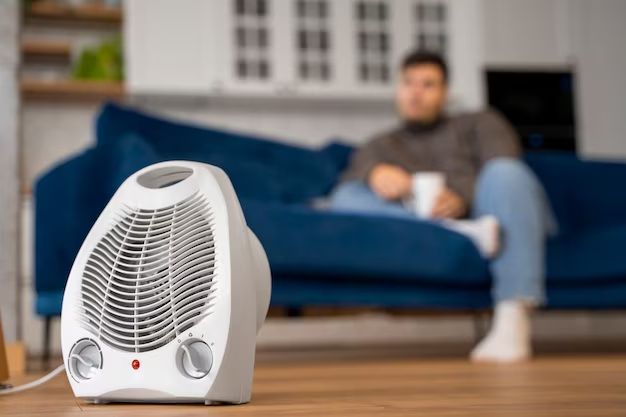When trying to determine what size room a 250 watt heater can heat, there are a few key factors to consider. In this article, we’ll walk through the math and calculations needed to find the recommended room size for a 250 watt space heater.
Page Contents
How Much Heat Does a 250 Watt Heater Produce?
The first thing we need to know is how much heat a 250 watt heater can produce. Heaters are rated by wattage, which indicates how much energy they consume. This wattage rating can be converted to BTUs (British Thermal Units) to determine heating power.
Here’s the conversion:
- 1 watt = 3.412 BTUs
So for a 250 watt heater:
- 250 watts x 3.412 BTUs = 852.5 BTUs
That means a 250 watt heater can produce 852.5 BTUs of heat energy per hour when running continuously.
How Much Heat is Needed to Heat a Room?
Once we know how much heating power a 250 watt heater can provide, we need to consider how much heat is actually needed to raise the temperature in a room. The general guideline is that it takes 1 BTU to raise 1 square foot of space by 1 degree Fahrenheit.
But we also have to account for heat loss. A room will lose some warmth through the walls, windows, doors and roof. This heat loss depends on the insulation and construction materials, but a general estimate is that a room loses about 1.5 BTUs per square foot per degree of temperature difference between the inside and outside.
So if we want to heat a room 10 degrees warmer than the outside, we need to produce enough BTUs to:
- Raise the room’s temperature by 10 degrees (10 BTUs per sq ft)
- Plus compensate for heat loss at 1.5 BTUs per sq ft per degree x 10 degree difference = 15 BTUs per sq ft
That’s a total of 25 BTUs per square foot needed to heat a room 10 degrees warmer than the outside temperature.
What Size Room Can a 250 Watt Heater Heat?
Now we can put together our numbers to estimate the size of room a 250 watt heater can adequately heat.
We’ll make a few assumptions for this example:
- The room needs to be heated to 70°F
- The outside temperature is 60°F
- So we need to raise the room’s temp by 10 degrees
- And the heat loss is estimated at 1.5 BTUs per square foot for this 10 degree difference
As calculated above, our 250 watt heater can produce 852.5 BTUs per hour. And we need 25 BTUs per square foot to heat the room 10 degrees warmer than outside.
So if we divide the heater’s BTU output by the BTUs needed per square foot, we get:
- 852.5 BTUs / 25 BTUs per sq ft = 34 square feet
That means a 250 watt heater can heat a room up to about 34 square feet, given our assumptions and typical heat loss estimates.
Let’s validate this with a real room example. If we have a bedroom that is 10 ft x 12 ft, that’s 120 square feet. This is larger than what our 250 watt heater can handle. But if we have a small office that is 8 ft x 10 ft (80 square feet), the heater should be able to raise the temperature by 10 degrees. Always best to stay under the heater’s capacity to allow it to run efficiently.
Other Factors That Impact Heating Capacity
There are a few other factors that can influence a heater’s effectiveness besides just room size:
- Insulation – Rooms with poor insulation will have much greater heat loss, limiting a heater’s capacity. Added insulation helps contain warm air.
- Windows – Lots of windows means more surface area for heat loss. Rooms with fewer and smaller windows will be easier to heat.
- Ceiling height – Heat rises, so rooms with high ceilings (over 8 ft) will be more difficult to heat than those with standard ceiling height.
- Drafts – Sources of drafts like gaps under doors and around windows will increase heat loss and reduce heating effectiveness.
A 250 watt heater will be suitable for a standard small room up to 80-100 sq ft with average insulation and an 8 ft ceiling. Larger rooms or those with more heat loss will require a more powerful heater or supplementary heat source.
Tips for Properly Using a 250 Watt Heater
Here are some tips to use a 250 watt space heater most effectively:
- Place the heater near the center of the room you want to heat.
- Avoid using an extension cord which may overheat. Plug the heater directly into a wall outlet.
- Keep the heater at least 3 feet away from any fabrics or furniture to prevent fire hazards.
- Aim the heat output to maximize warmth in occupied areas.
- Close doors to keep heat contained in the room you are heating.
- Use a thermostat or timer to control the heater and avoid wasting energy.
- Make sure the heater sits on a level, nonflammable surface.
- Don’t leave the heater unattended or running while sleeping.
Using these safe practices will allow a 250 watt heater to effectively and efficiently provide supplemental warmth for small to mid-sized rooms.
Conclusion
A 250 watt heater can typically heat a room up to about 34 square feet, given average insulation and heat loss. This capacity can vary based on room construction, ceiling height, windows, and other factors that impact heat retention. With proper use and placement, a 250 watt heater can be a good option for providing extra warmth in spaces like small offices, bathrooms, bedrooms and dens during colder months. Just be sure to choose a heater with appropriate capacity for the room size you need to heat.
